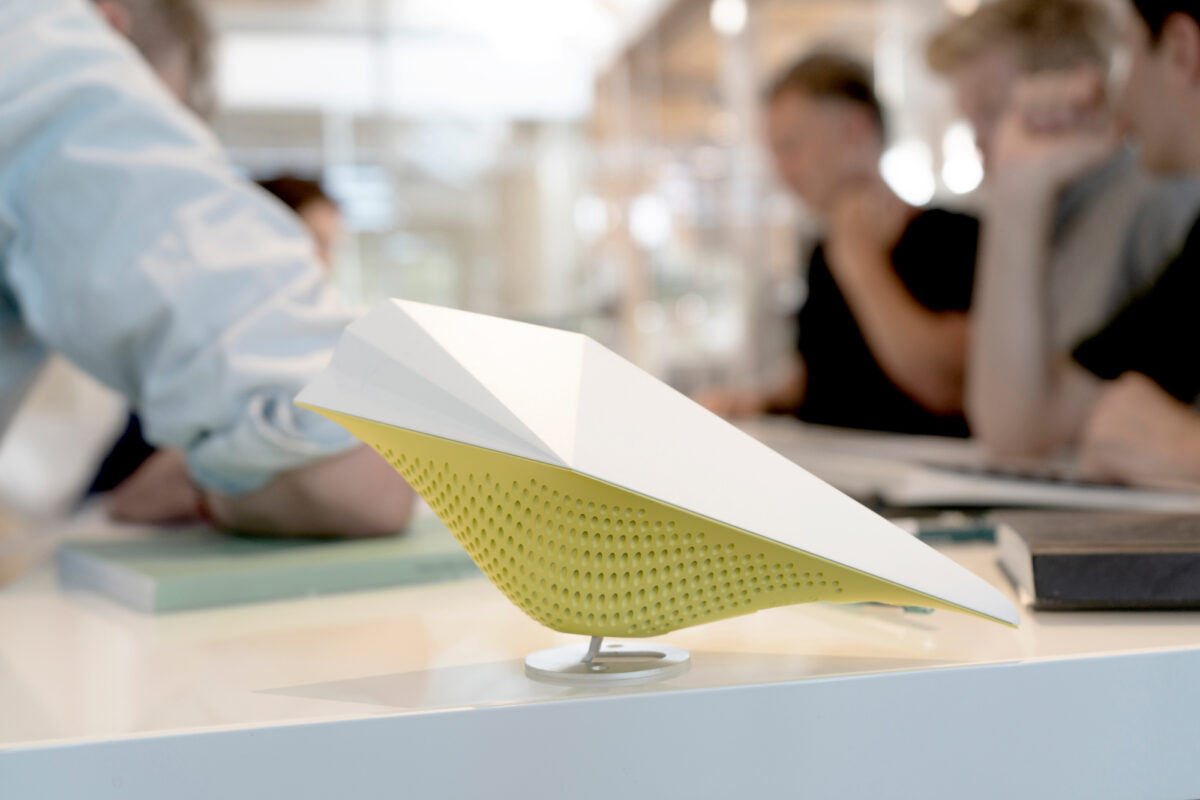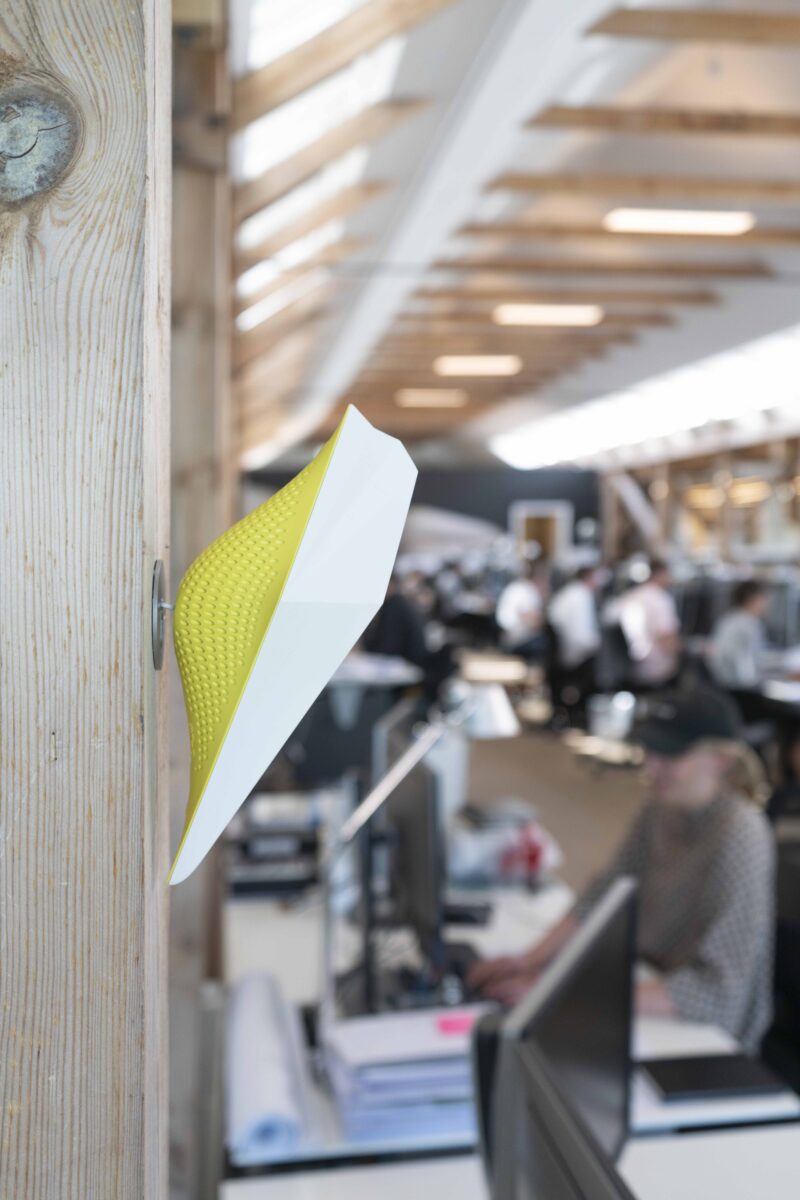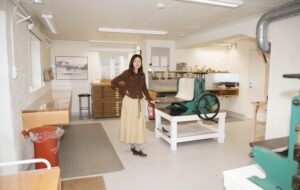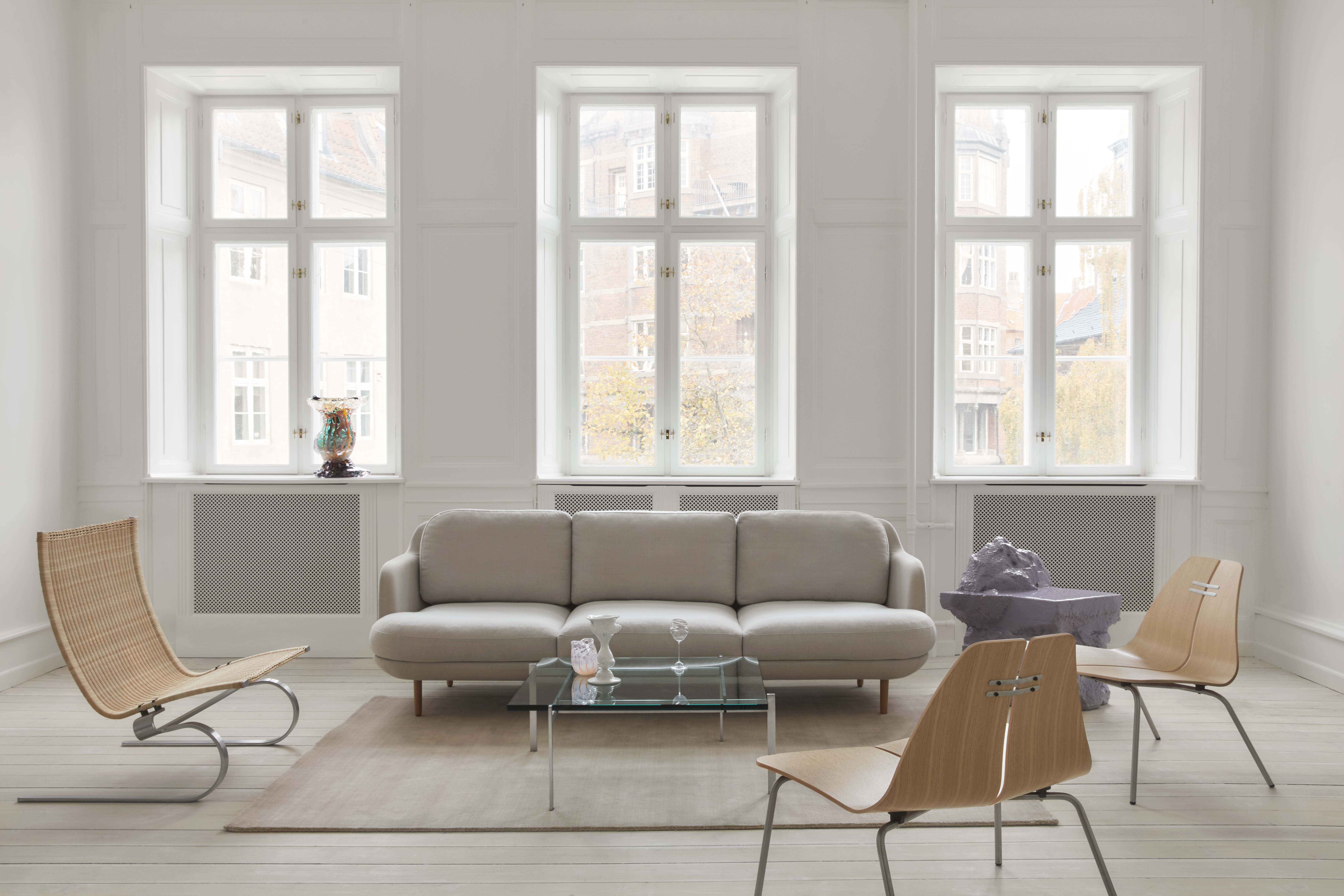Through the canary-inspired AirBird, the Danish design studio aims to give a tangible form to poor air quality in indoor environments

Words by Hugh Metcalf
‘The new frontier of wellbeing is our indoor environment,’ says Lasse Lind, a partner at 3XN Architects’ innovation unit GXN, responsible for the design of a new indoor air quality sensor called AirBird.
Created in collaboration with the VELUX Group and Leapcraft, AirBird takes both aesthetic and functional inspiration from the idea of a canary in a coal mine – which would alert miners to gas leaks – given a more sculptural form of a Japanese origami bird.
When sensors inside the AirBird detect carbon dioxide levels are too high in the surrounding environment, it triggers an algorithm which causes the sensor to ‘chirp’ and a small light to flash.
While what the AirBird detects doesn’t quite translate to that of the threat of gas leaks in a mine shaft, the device – which also measures temperature and humidity – provides a tangible grasp of indoor air quality and a signal that the space should be ventilated.

It’s this accessible data for a building’s users that GXN has found to be habit-forming. ‘Real-time data provides insight that enables people to change their habits, promoting better indoor air quality and wellbeing,’ says GXN architect and parametric designer Jens Jørgensen. ‘It enables building owners and users to improve wellbeing while simultaneously reducing energy and related costs.’
Air quality sensors have a heightened role to play these days, while 90% of our time is spent indoors. Research shows that pollutant concentration indoors affects the performance of office workers, students’ learning, while also impacting sleep and the risk of asthma and allergies.
Behavioural interventions, offering awareness of the problem through sensors such as Airbird so that action can be taken, is just one element of a multi-pronged approach to improving indoor air quality. Structural interventions and renovations alongside smart technology automation are also touted as tools to improve indoor air quality – as well as improving outdoor air quality, of course.
















